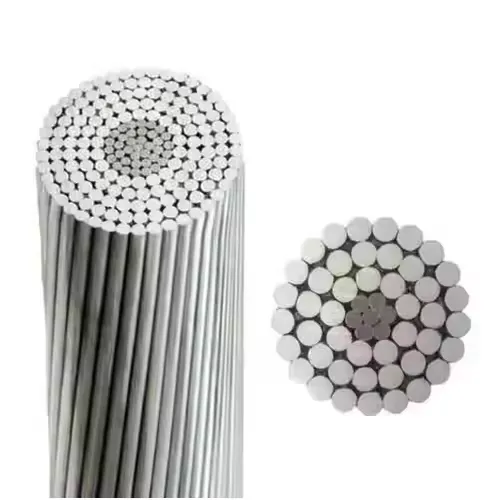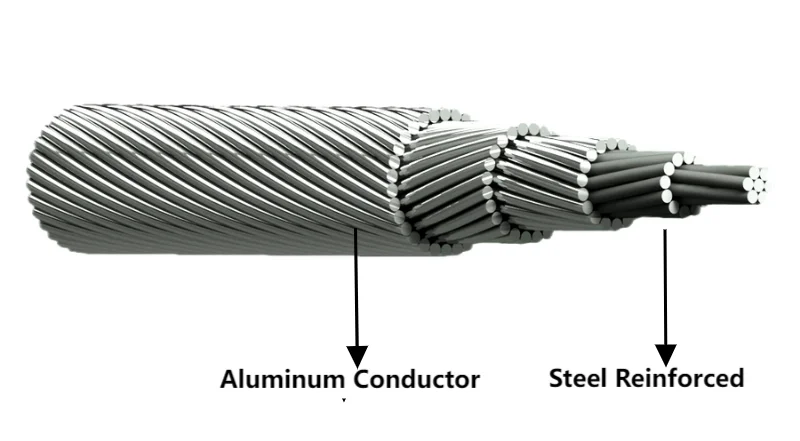Time: 2025-04-16 15:52:29 Source: Henan Province Jianyun Cable Co., Ltd.
A bare wire is an electrical conductor that lacks insulation or protective covering, exposing the metal—usually copper or aluminum—to the environment. In some cases, "bare wire" refers to conductors intentionally designed without insulation, such as grounding wires or overhead power lines, where the lack of insulation is part of their function. For example, a bare copper grounding wire in a residential electrical system ensures a safe path for fault currents to dissipate into the earth. However, the term often applies to wires that have become exposed due to damage, wear, or improper installation, such as a frayed extension cord where the plastic insulation has peeled away, revealing the inner conductors.
Bare wires are common in specific applications, like busbars in electrical panels or high-voltage transmission lines, where insulation isn’t necessary due to their design and placement. But when a wire that’s meant to be insulated becomes bare, it poses risks. Think of a bare wire as a naked flame—it can be useful in a controlled setting, like a fireplace, but dangerous if left unchecked.

Touching a bare wire can be extremely dangerous, depending on whether the wire is live (energized) and the voltage it carries. If the bare wire is part of a live circuit—meaning electricity is flowing through it—touching it can result in a severe electric shock, burns, or even electrocution. The risk increases with higher voltages; for instance, a bare 120V household wire can deliver a painful shock, while a 13.8 kV medium voltage line could be fatal. Even low voltage wires (e.g., 12V DC in a car battery) can cause injury if the current is high enough, as the human body can conduct electricity, potentially disrupting heart rhythms or causing muscle contractions.
However, if the wire is not live—meaning the power is turned off at the source, such as by flipping a breaker or unplugging a device—it’s generally safe to touch, though you should always verify with a non-contact voltage tester first. Grounding wires, which are often bare by design, are also safe to touch under normal conditions since they’re not meant to carry current unless there’s a fault. Still, caution is key: never assume a bare wire is de-energized without confirming it. Touching a bare wire is like playing with a loaded gun—you’d better be absolutely sure it’s not loaded before you take the risk.

Fixing a bare wire is essential to restore safety and functionality, and the process depends on the extent of the damage and the wire’s application. Here’s a step-by-step guide to repairing a bare wire, with a focus on small-scale fixes like a damaged extension cord or household wiring. For larger or high-voltage systems, professional intervention is recommended.

For example, if a bare wire in a 12V solar panel system is exposed due to UV damage, you might use heat shrink tubing to insulate it, ensuring the system remains safe and operational. Repairing a bare wire is like patching a leaky pipe—you need to seal it properly to prevent bigger problems down the line. If you’re unsure or dealing with high voltage, always consult a licensed electrician.
A bare wire is a conductor without insulation, either by design (like grounding wires) or due to damage, and it can pose significant risks if mishandled. Touching a bare wire is generally unsafe unless you’re certain it’s de-energized, as live wires can cause shocks or worse. Fixing bare wires involves isolating the power, insulating the exposed area with tape or heat shrink tubing, and testing the repair, though professional help is advised for complex or high-voltage situations. By understanding and addressing bare wires properly, you can ensure your electrical systems remain safe and reliable.
Word count: ~700 words
(Note: This article is based on general electrical knowledge. For specific repairs, consult a professional electrician and follow local codes.)